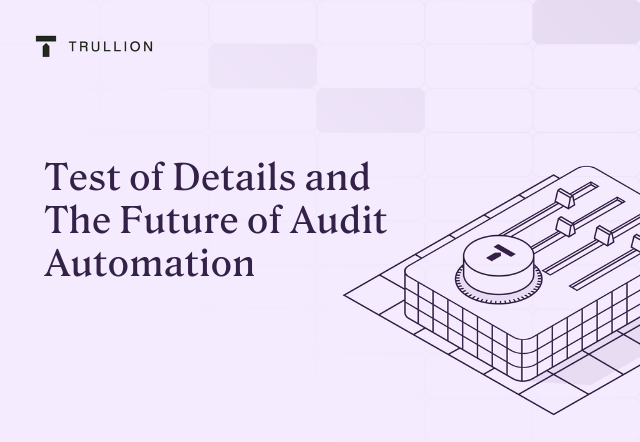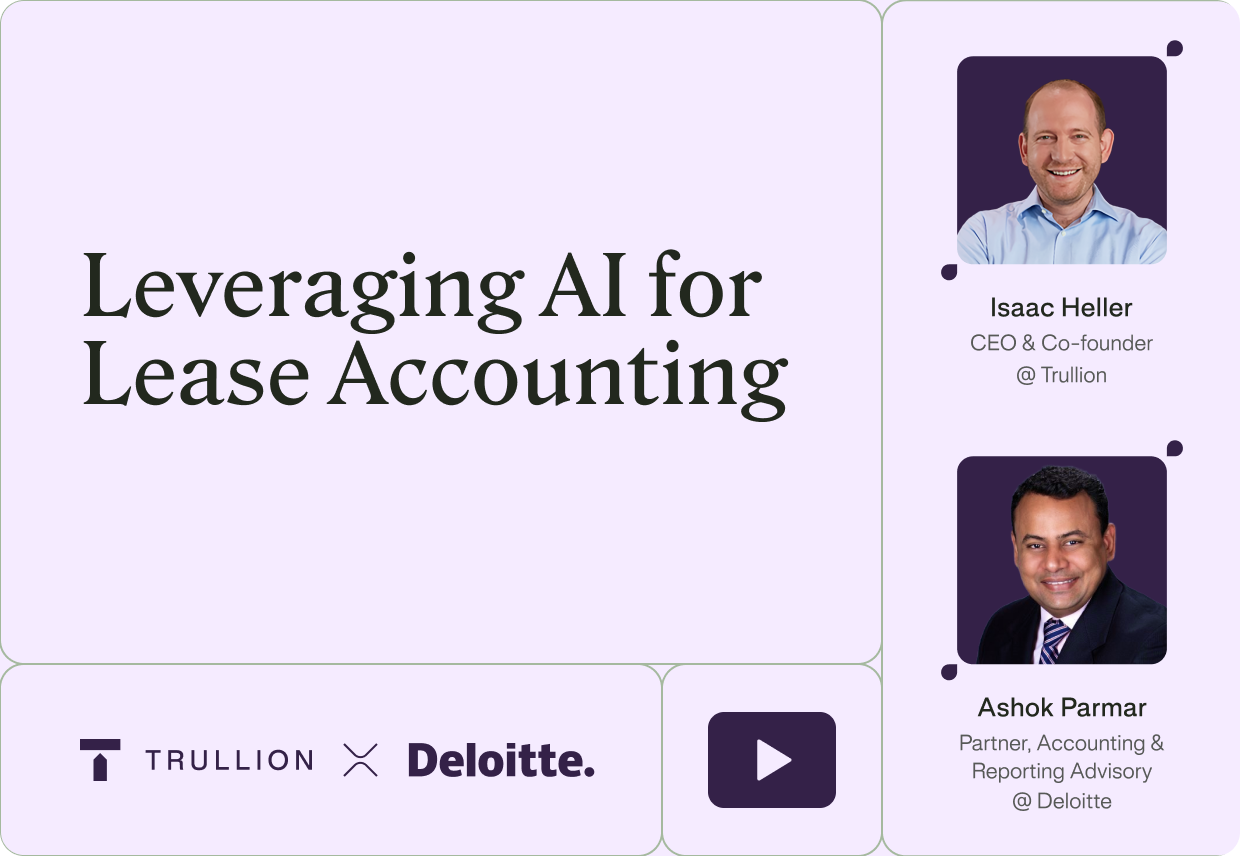Where is Audit going?
Audit is in a state of flux. And while this means uncertainty on the one hand, it also means a level of excitement on the other.
What is driving this tectonic industry shift, which will no doubt lead to a new landscape, a new reality, for the profession?
There are a number of factors involved, each one powerful in and of itself but also affecting and being affected by others.
These factors include seismic technological advancements such as the generative AI revolution; scandals that have shaken the profession to its core – and this in a post-Sarbanes-Oxley era; a business landscape that is almost unrecognizable from a decade ago, and new standards being introduced to try and make sense of it all.
As with any complex problem, the best way to understand these challenges and chart the course forward is by getting back to first principles.
First principles, finance and AI, and technology as an enabler
The goal of the audit of financial statements, as described by the Public Company Accounting Oversight Board (PCAOB), is “the expression of an opinion on the fairness with which they (financial statements) present, in all material respects, financial position, results of operations, and its cash flows in conformity with generally accepted accounting principles.”
This should be the guiding light, the North Star of the profession, no matter how much external factors change – or, to be more accurate, the more external factors change.
With this goal in mind, it’s easy to see how the recent advancements that Audit has had to deal with can be used to make Audit more accurate, more transparent, more relevant, more critical to all stakeholders – and dare we say, more exciting than ever before.
Nowhere is this more evident than in an area where accountants and auditors are extremely familiar with test of details.
A prime example: test of details
Test of details provides the perfect example of the past, present, and future of audit, given the tremendous changes sweeping across the industry.
Test of details – as it was
Anyone who has completed a year-end audit would know the feeling: in this particular case, a test of controls was deemed insufficient, and so the overworked, stressed audit team has to manually select a sample of lease payments and verify that lease payments recorded in the financial statements match the terms specified in the lease agreements. They must compare payment amounts, frequency, and timing with the lease documents. To make matters worse, the client’s documentation is disorganized, some documents are missing, and the client switched ERPs midway through the year, while some records are electronic and others are still paper-based – and this is all before the auditor has to test agreements and contracts for embedded or otherwise unrecorded leases.
Just reading this is enough to give many auditors a headache.
The drawbacks
The pitfalls and areas of friction that arise from the “traditional” way of performing test of details are plain to see and include:
Time-intensive: Manual testing requires a significant amount of time and effort, especially when dealing with large volumes of transactions or accounts. In many cases, the volume of data is so vast that a human being could not possibly effectively test it, even through sampling. At high data volumes, programs such as Excel can struggle to keep up – adding stress to deadlines and limiting bandwidth.
Dependency on Client Cooperation: Auditors often rely on the client’s cooperation to access necessary documents and information. Delays or unresponsiveness from the client can hinder the audit process.
Data Quality Issues: Inaccurate or incomplete client records can lead to additional effort in tracking down missing information or resolving discrepancies.
Inefficiencies: Manual testing can be inefficient, especially when dealing with repetitive tasks or when information is scattered across various sources, worksheets, and local file servers. Moving relevant but silod information to and from online, offline, and hard copy archives is messy and carries data security risks without arduous version tracking.
Potential for Human Error: Performing tests manually increases the risk of human error, such as transcription mistakes or misinterpretation of data.
Test of details today and in the future
Contrast this with what a test of details can – and should – look like. With the same circumstances as the previous example, this time, the client company and audit team are using Trullion’s AI-powered accounting oversight platform.
Contracts – both paper and PDF – were scanned by the Trullion system, which extracted key data such as dates, amounts, and timing and proposed journal entries that were accepted by the finance team. The system generated the required disclosures and ensured the entire process was automatically compliant with the latest lease accounting standards.
For the audit team, the process is now a breeze. They have permissions-based real-time access to the entire audit trail, from source documents to journal entries and reports, together with the twin assurances of complete compliance and accuracy. A unified cloud-based view of all actions, materials, tests, and evidence ensures fast and efficient vouching with peace of mind for all.
The section is wrapped up in no time, and the audit team now has the bandwidth and information to focus on high-value activities – like meeting with the accounting CFO and discussing the major risks facing the company and how these could be mitigated moving forward. In short, the added value to the relationship is an outgrowth of automated efficiency and the deeper insight afforded to both client and auditor from an AI-powered workflow.
The benefits of leveraging available technologies
To summarize, the benefits of incorporating technology in test of details – and other audit procedures like substantial analytical testing and even tests of controls – include:
Automation and Efficiency:
Technology automates many manual and time-consuming tasks, such as data entry, calculations, and reconciliation.
Data Analytics and Insights:
Advanced data analytics tools enable auditors to analyze large datasets quickly and identify patterns, anomalies, and potential risks.
Improved Risk Assessment:
Technology helps auditors identify and assess risks more effectively. By analyzing historical data and utilizing predictive analytics, auditors can better understand the client’s risk profile and tailor audit procedures accordingly.
Enhanced Accuracy and Consistency:
Automation reduces the likelihood of human errors and inconsistencies that can occur during manual data entry and calculations.
Remote Auditing:
Technology enables remote auditing capabilities, allowing auditors to access client systems, data, and documents from anywhere, via client managed access-permissions, without concern for offline Excel access to critical information.
Collaboration and Communication:
Collaboration tools and cloud-based platforms enable seamless communication and sharing of documents between audit team members and clients. No more endless email chains or time lost to waiting for a response.
Document Management and Storage:
Digital document management systems make it easier to organize, store, and retrieve audit documentation.
Enhanced Fraud Detection:
Technology can help auditors identify patterns of potential fraud through data analytics and anomaly detection algorithms.
Auditing Complex Transactions:
Technology allows auditors to analyze and verify complex financial transactions more efficiently, such as derivatives, fair value measurements, and intricate revenue recognition arrangements.
Regulatory Compliance:
Auditors can stay up-to-date with changing regulatory requirements. Automation can assist in performing tests for compliance and generating the necessary reports.
Audit Documentation and Reporting:
Automated tools streamline the process of generating audit reports and documentation, making it easier for auditors to compile findings and communicate results to stakeholders.
Client Insights and Value-Added Services:
By using technology to analyze client data, auditors can provide valuable insights to clients about their business performance, efficiency improvements, and areas for cost savings.
Anticipate a dynamic, exciting future for Audit
All of this adds a buzz to where auditing will be in the near future – or the present, for those making use of an AI-powered audit solution suite such as Trullion. With audit testing modules, data extraction workflows, and generative AI knowledge management & advisory – Trullion sets the stage for a new era of accounting and audit automation.
The future of audit is about less manual work and more leveraging of technology, less grudging expense, more value added, and less stress, more excitement.










